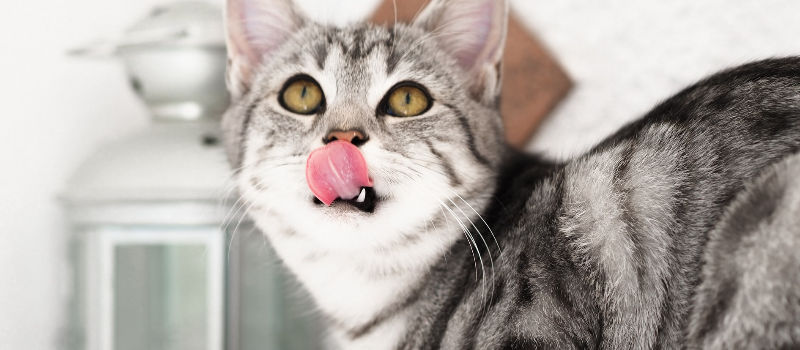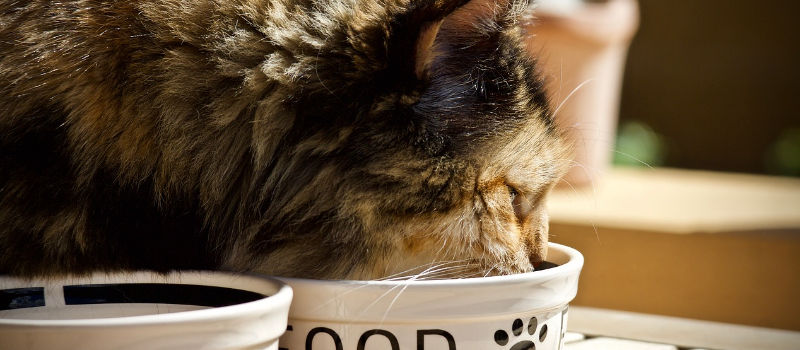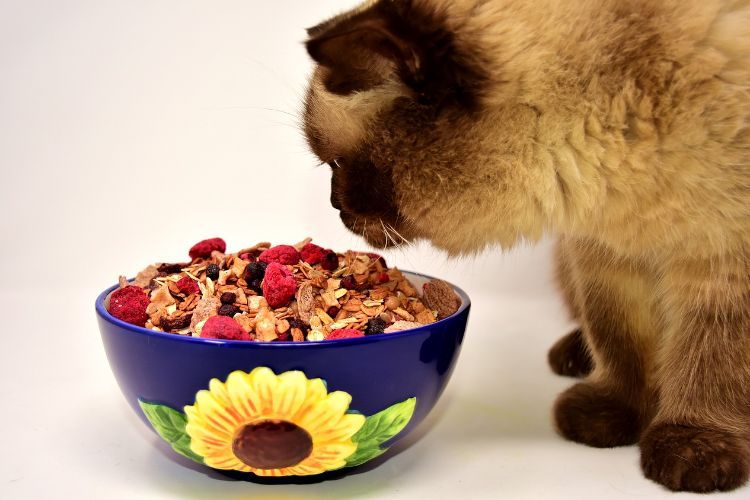The Importance of Quality Food for Your Feline Friend
Posted on Friday, July 09, 2021
To keep this site free for consumers, we receive compensation for customer referrals.
You love your feline friend and want to feed her a balanced, nutritious meal that meets her specific dietary needs. Each cat food company will tell you their brand is the best, but it’s time to ignore the marketing jargon and check the label. We’ll help by cluing you in on the ideal cat nutrition and what type of food can best meet your cat’s macronutrient needs.

Types of Macronutrients
Just like us humans, cats have a complex gut microbiome that plays a big role in their overall health. To keep it running smoothly they need a proper balance of macronutrients in their daily diet. This includes protein, healthy fats, and carbohydrates. Let's learn a bit more about how much of each macronutrient your cat's diet should include.
Protein
Cats are carnivores so they should be given food that is high in animal-based protein. Acceptable cat food will have at least 25% protein, though greater than 50% is ideal. The first ingredients listed on the label should always be meat. Aim for cat foods that have specific protein sources listed in the label, like chicken, turkey, salmon, tuna, or lamb. High moisture content is also important, making wet food preferable to dry in many cases.
Fat
Like protein, cat food should be high in essential fatty acids. Choose a food that has 20-30% fat. Not only do foods high in protein and fat taste better to your feline friend, but that fat content is actually nutritionally necessary for cats. Fats should come from named sources like “chicken fat” or “pork fat.” Corn, soybean, and safflower oil are also good sources of healthy fat.
Carbohydrates
Since cats are carnivores, they have no nutritional need for carbs. When you look at the label, grains should only make up less than 10% of the cat food recipe. These are often just fillers that have no nutritional value. Aim for foods with potatoes or peas as carbohydrate sources as these are less likely to cause digestive issues. Dry food tends to be higher in carbs, making high-protein wet and fresh foods nutritionally better for your cat. If in doubt, look for the AAFCO statement on the bag. This American Association of Feed Control Officials certificate of approval means that the food is nutritionally complete and balanced for your cat.

Types of Cat Food
Cat food can be classified by type: dry, wet, or fresh. Acceptable food choices can be found in each type, but in order to choose wisely you also need to take into account your cat's individual needs and your own situational preferences.
Dry Cat Food
Dry pet food has less than 14% moisture content, while wet food has over 60%. Though it often comes at a lower cost than canned, dry food can have the same nutritional value as canned. Dry food is easier and more convenient to feed because it can be left out so cats can graze freely throughout the day. Its high energy density makes it great for underweight or picky eaters, but this can be a problem for overweight cats or those who tend to overeat.
Unlike wet or fresh food, dry cat food can be used with food dispenser toys to provide mental enrichment for your cat as well. Some dry diets can also have beneficial dental effects. Another plus is that dry food doesn’t have to be refrigerated and comes in a variety of sizes. However, you should only buy sizes that can be used up in less than a month to avoid spoilage.
Wet Cat Food
Wet, or canned, cat food is cooked at a high temperature, then canned for sterilization. It has a longer shelf life than dry food but expires quicker once opened. It comes in a variety of textures and flavors which may make it more palatable than its dry counterparts. On the downside, wet cat food can be more expensive by volume and isn’t as convenient to feed as dry.
Wet cat food is a better choice where hydration is concerned. Wet foods can promote urinary health, help with weight management, and prevent constipation. If your cat suffers from diabetes, kidney disease, a lower urinary tract disease, or you are concerned about dehydration, wet food is an ideal feeding choice. And, as long as it is a high quality canned food, it typically meets a cat’s macronutrient needs better than dry food.
Fresh Cat Food
Today you can choose from dozens of fresh cat food brands in your grocery store’s refrigerated section or customize your own meal plan online. Fresh pet food is made with little or no preservatives. It is cooked (often with a combination of grains, fruits, and vegetables), packaged, and shipped to your home.
Because of the fresh quality and natural texture, this type of food might be the tastiest to your cat. Since most fresh pet food companies allow you to customize your cat's diet, you can incorporate only what your cat needs. Similar to wet food, fresh food tends to have a lower caloric density than dry food, making it less efficient but possibly more nutritious. The two major drawbacks of fresh cat food are the limited shelf life (it must be refrigerated) and the higher price.

Every Cat is Unique
Every cat has a unique personality and body, resulting in different dietary requirements and tastes depending on the cat. High-quality dry, wet, or fresh cat foods with the proper ratio of macronutrients can help keep your cat happy and healthy. But age, gender, breed, medical history, and lifestyle will also play a big factor in your cat's health and what it's ideal diet should consist of. If you're ready to explore a more nutritionally balanced diet for your kitty, all without leaving your home, check out our best cat food delivery options.
Top Posts
- Exploring Computer Monitors
- Exploring the Benefits of Video Doorbells
- Maintenance for Smoke Detectors
- Treadmills: The Ultimate Guide to Getting Fit
- Rice Cookers for Every Kitchen
- Curling Irons for All Hair Types
- Better Dental Health with Electric Toothbrushes
- Meal Delivery for Celiac Disease & Gluten Intolerance
- Pet Insurance for Cats
- Air Purifiers for Allergies


